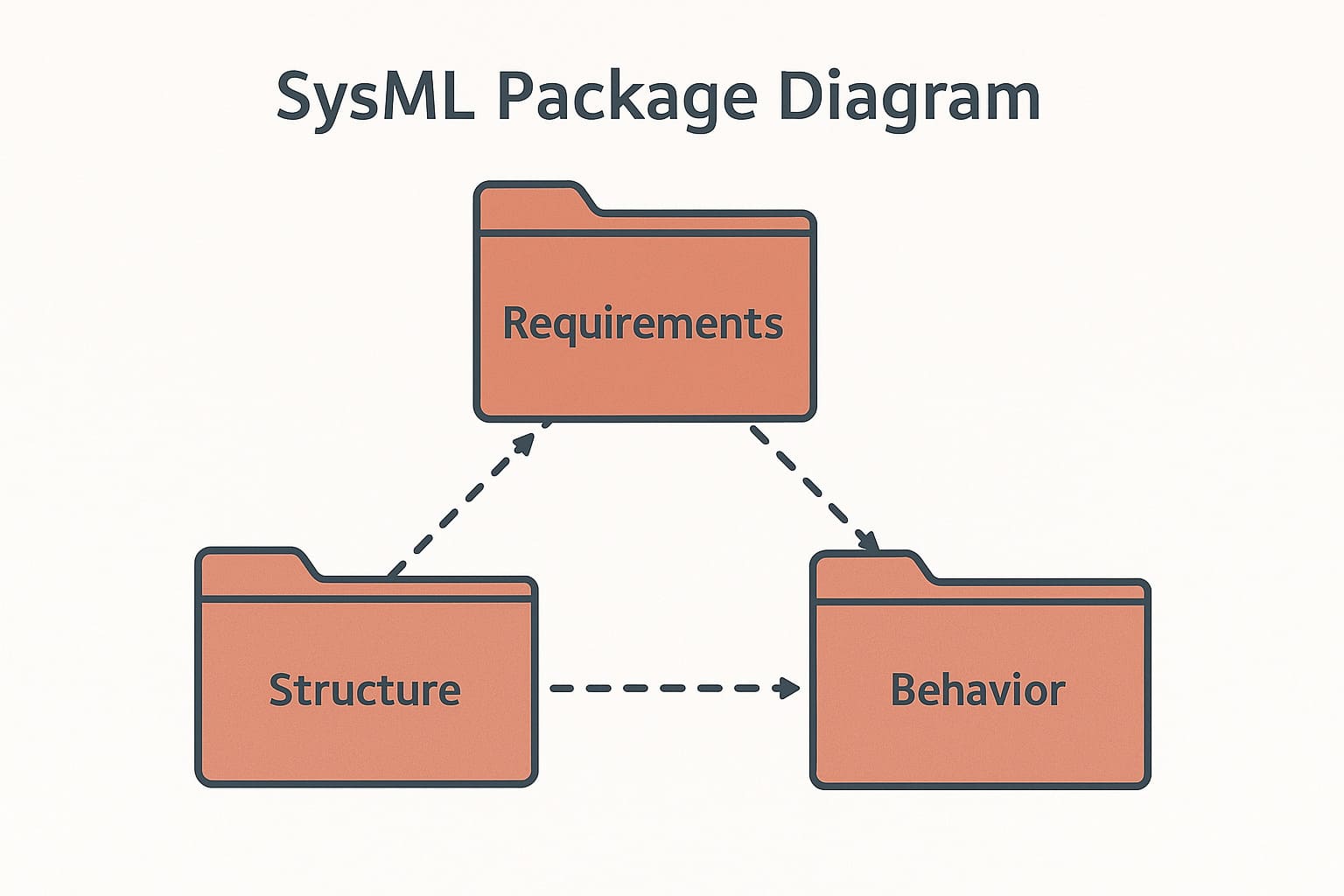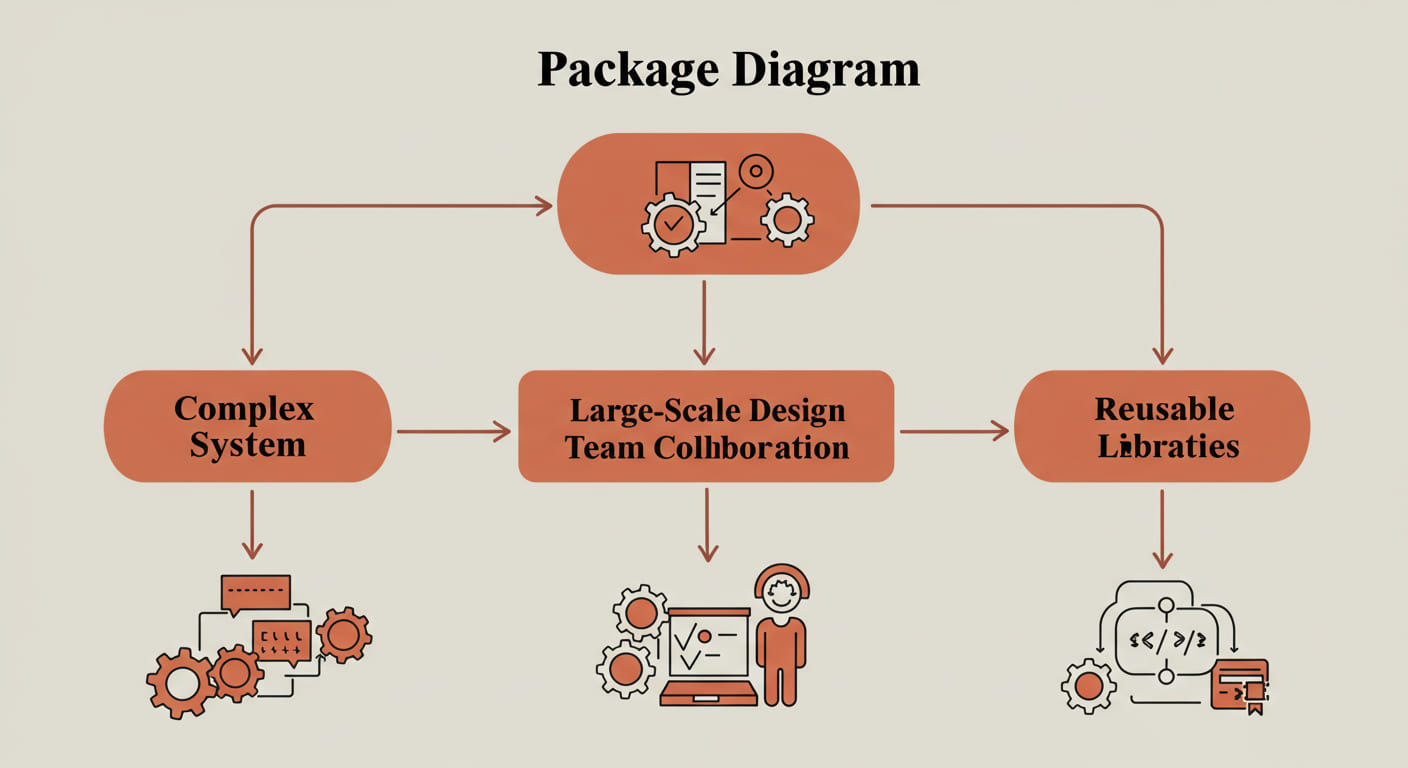Have you ever felt 'lost' in a sea of model elements while designing a system? 😊 I've been there, too, wondering where to even begin organizing a vast model. That's precisely when a SysML Package Diagram becomes an incredibly useful 'map'. Today, let's explore this diagram that neatly organizes complex systems in a fun and easy way!

What is a SysML Package Diagram? 🤔
In short, a SysML Package Diagram is a 'model organization tool'. Just like organizing files into folders on a computer, it groups various system components into logical groups called 'packages'. This allows you to easily grasp the overall structure of the model visually and see the dependencies between elements at a glance. Especially when dealing with large, complex systems, the package diagram is an essential tool for managing model complexity and facilitating navigation.
It's important to remember that a package diagram shows the structure of the system 'model', not the system itself. This means its purpose is different from a Block Definition Diagram (BDD), which illustrates the physical components of the system.

Key Components of a Package Diagram 📊
A package diagram consists of a few key elements and relationships. Here's a simple table summarizing the main components.
| Element | Description | Notation |
|---|---|---|
| Package | The basic container for grouping model elements. It can contain anything, including blocks, requirements, activities, etc. | A tabbed folder icon 📁 |
| Model | The top-level package that represents the entire system model. | A small triangle inside the folder icon |
| View | A type of package that defines a representation of the system from a specific perspective (Viewpoint). | «view» stereotype |
| Dependency | Indicates that one package (the client) uses elements from another package (the supplier). Represented by a dashed arrow. | ----> |
| Package Import | Imports all public members from another package, allowing them to be used as if they were defined locally. Represented by the «import» stereotype. | «import» |
Packages provide a Namespace. This means that element names must be unique within a package, but you can have elements with the same name in different packages. This allows you to structure your model without name conflicts.

When and How to Use Package Diagrams 👩💼👨💻
Package diagrams are useful at various stages of modeling. They truly shine in the following situations:
- Large-Scale System Design: When a system is too large to comprehend at once, dividing it into packages by major functions or subsystems makes the overall picture easier to understand.
- Team Collaboration: When multiple teams work on a project together, you can delineate work scopes by separating each team's responsibilities into packages.
- Improving Reusability: By creating separate packages (Model Libraries) for commonly used functions or libraries, you can easily import and reuse them in other projects.
📝 Creation Tips
1) Utilize Hierarchy: Create a hierarchical structure by nesting packages within other packages. This helps to organize the model more systematically.
2) Give Meaningful Names: It's crucial to assign intuitive and meaningful names to each package so their roles are clear.
3) Minimize Dependencies: Keep the dependencies between packages as simple as possible. Complex dependency relationships make the model difficult to understand and modify.

SysML Package Diagram Key Summary
Frequently Asked Questions ❓
Today we've learned about SysML Package Diagrams. When you need to systematically organize a complex system model, this diagram can be an excellent solution. If you have more questions, feel free to leave a comment! 😊